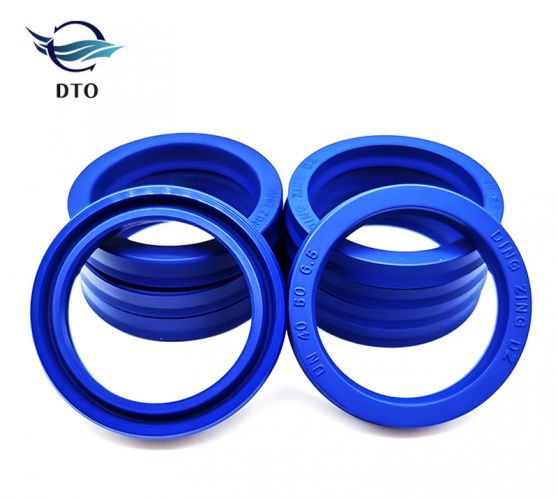Factors to Consider When Choosing Oil Seals
Oil seals, also known as shaft seals, rotary seals, or radial lip seals, play a crucial role in various mechanical systems by preventing the leakage of lubricants and keeping contaminants out. They are vital in maintaining the efficiency and longevity of machinery. There are several types of oil seals designed to cater to different applications and operating conditions. In this article, we will delve into the diverse world of oil seals, exploring their types, functions, and applications.

Oil seals are essential components in any system that involves rotating shafts and bearings. They help in preventing the escape of lubricating oils and greases, thereby ensuring smooth and efficient operation. These seals also protect against the ingress of dirt, dust, and other contaminants, which can cause wear and damage to the internal components of the machinery.
Types of Oil Seals
1. Radial Lip Seals
Radial lip seals are the most common type of oil seals used in various industrial applications. They consist of a flexible lip that is in continuous contact with the rotating shaft. The lip is designed to retain lubricants and prevent contaminants from entering the sealed area.
Single Lip Seals: These seals have one sealing lip and are typically used in applications where only lubricant retention is required.
Double Lip Seals: These have two lips – one for retaining the lubricant and the other for excluding contaminants. They are ideal for harsher environments.
2. Axial Seals
Axial seals are designed to seal along the axis of the shaft rather than around the circumference. They are used in applications where space constraints prevent the use of radial lip seals. Axial seals are commonly found in automotive and aerospace applications.
3. Rotary Seals
Rotary seals, also known as rotary shaft seals, are used in applications involving rotating or oscillating movements. They provide an effective seal between the rotating shaft and the stationary housing. Rotary seals are often used in pumps, motors, and gearboxes.
4. V-Ring Seals
V-ring seals are axial seals made of elastomers. They are installed directly on the shaft and provide a secondary seal. V-ring seals are highly flexible and can compensate for misalignments and shaft deflections. They are used in a wide range of applications, including agricultural machinery, automotive, and industrial equipment.
5. PTFE Seals
PTFE (Polytetrafluoroethylene) seals are known for their excellent chemical resistance and low friction properties. They are used in applications where traditional elastomeric seals would fail due to high temperatures, aggressive chemicals, or high surface speeds. PTFE seals are commonly used in chemical processing equipment, food and beverage industry, and pharmaceuticals.
6. Bonded Seals
Bonded seals, also known as Dowty seals, consist of a metal washer with a vulcanized rubber sealing element. These seals are used to provide a reliable seal in high-pressure applications. Bonded seals are commonly used in hydraulic and pneumatic systems.
7. Cassette Seals
Cassette seals are complex, multi-lip seals designed for heavy-duty applications. They consist of a seal lip module enclosed within a protective casing. Cassette seals offer superior protection against contamination and are widely used in off-road vehicles, agricultural machinery, and construction equipment.
8. Labyrinth Seals
Labyrinth seals use a series of interlocking grooves to create a tortuous path for the fluid. This design significantly reduces leakage and is effective in high-speed applications. Labyrinth seals are often used in gas turbines, compressors, and turbochargers.
9. Magnetic Seals
Magnetic seals use magnetic fields to form a seal between the rotating and stationary components. These seals are contactless and offer low friction and wear. Magnetic seals are ideal for high-speed applications and are used in vacuum systems, semiconductor manufacturing, and aerospace.
Moulding: A Comprehensive Guide.
Factors to Consider When Choosing Oil Seals
Как работает медный тисненый лист?
چرا صادرکنندگان T پتی از استیل ضد زنگ را انتخاب کنیم؟
When selecting oil seals for a specific application, several factors need to be considered to ensure optimal performance and longevity:
Material: The choice of material is critical as it determines the seal’s compatibility with the lubricant and its resistance to temperature, chemicals, and wear. Common materials include Nitrile Rubber (NBR), Fluoroelastomer (FKM), and PTFE.
Size: The seal’s dimensions, including inner diameter, outer diameter, and width, must match the shaft and housing specifications.
Operating Conditions: The temperature, pressure, and speed of the application must be considered to choose a seal that can withstand these conditions.
Environmental Factors: The presence of contaminants, moisture, and other environmental factors can affect the seal’s performance and should be taken into account.
Applications of Oil Seals
Oil seals are used in a wide range of industries and applications, including:
Automotive Industry: Oil seals are used in engines, transmissions, and differentials to retain lubricants and prevent contamination.
Industrial Machinery: Seals are used in pumps, compressors, gearboxes, and other machinery to ensure smooth operation and longevity.
Aerospace: High-performance seals are used in aircraft engines, landing gear, and hydraulic systems to maintain performance under extreme conditions.
Agricultural Equipment: Oil seals protect bearings and other components from dirt and moisture, ensuring reliable operation of tractors and other equipment.
Marine Applications: Seals are used in ship engines, pumps, and steering systems to prevent leakage and protect against saltwater corrosion.
Conclusion
Understanding the various types of Skeleton oil seals and their applications is crucial for selecting the right seal for your specific needs. Whether you are dealing with high-speed machinery, aggressive chemicals, or extreme temperatures, there is an oil seal designed to meet your requirements. By choosing the appropriate oil seal, you can ensure the efficient and reliable operation of your machinery, reduce maintenance costs, and extend the service life of your equipment.
49
0
0


Comments
All Comments (0)